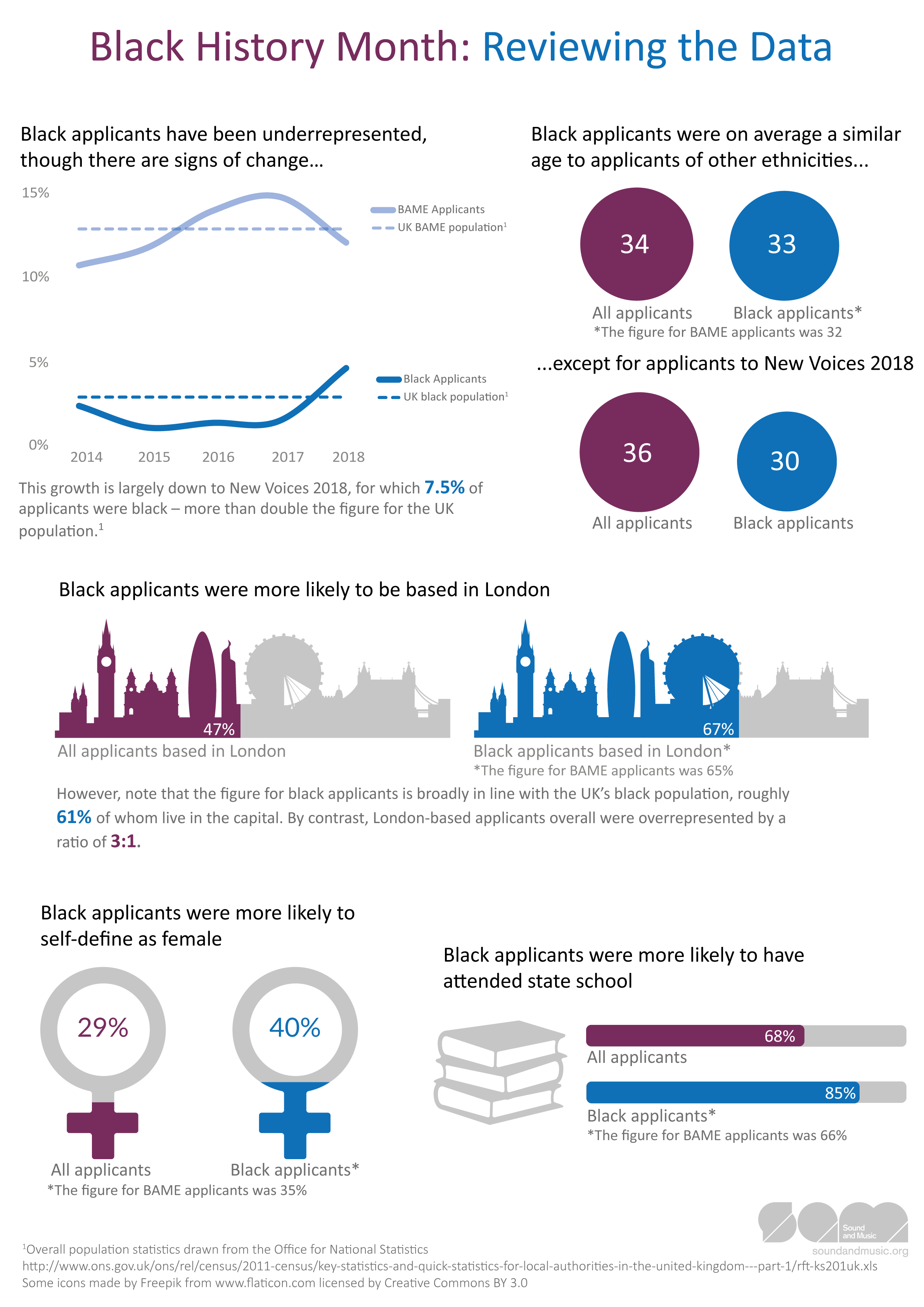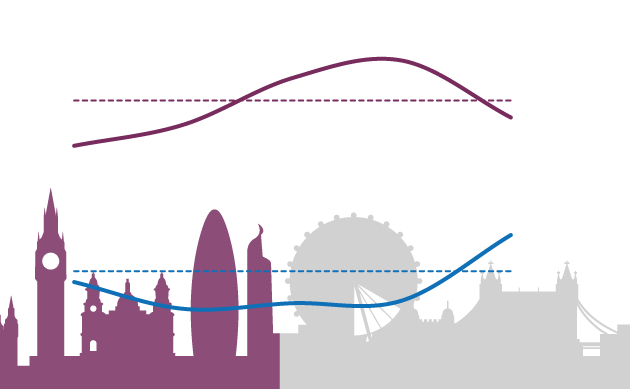‘We continue to evolve our language around race and ethnicity, and in May 2020, we made the decision to no longer use the acronym BAME.’
To mark this year’s Black History Month, we’re sharing some recent analysis we have done about the demographics of those applying for our artist development opportunities.
We know – from experience and from the evaluations we carry out – that the vast majority of applicants to our programmes are white. But this is the first time we’ve tried to generate a more detailed picture: how have the figures changed over the years? Are Black composers of a similar age to others, and with a similar gender split? What about their educational backgrounds and where in the UK they’re located? Addressing these questions is one way to start getting a clearer picture of where the biggest challenges lie.
The research is based on information supplied by programme applicants through our equal opportunities forms. Like all such forms, they’re far from perfect: they rely on applicants being willing to categorise their own ethnicities – or on researchers to categorise those answers. This inevitably means being reductive, but we strongly believe that progress comes from sharing what we do know. If you’d like to know more about how we’ve arrived at these figures, please get in touch and we’ll be happy to tell you more.

You can download this infographic as a pdf. Please let us know if you’d like the data in another format.
Find out more #BlackHistoryMonth #NewMusic


